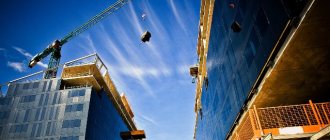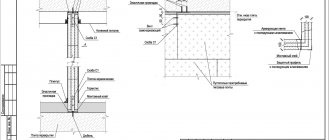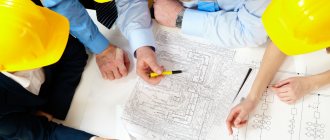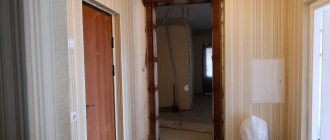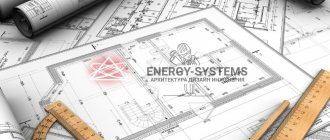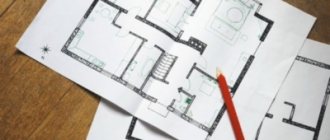As stated in Resolution of the Council of Ministers No. 384 “On some issues of reconstruction and redevelopment, installation of individual antennas and other structures on the roofs and facades of multi-apartment residential buildings, reconstruction of residential and (or) non-residential premises in multi-apartment, blocked residential buildings, single-apartment residential buildings, as well as non-residential capital buildings in the local area", during the period of reconstruction and (or) redevelopment in multi-apartment and blocked residential buildings, it is prohibited to carry out reconstruction and (or) redevelopment work that creates noise or vibration on weekends and holidays, as well as to begin such work earlier 9 hours and finish them later than 19 hours on weekdays; clutter and pollute corridors, flights of stairs and landings, passages, emergency exits and other auxiliary premises of a residential building with construction materials and their waste; use passenger elevators to transport construction materials and their waste without packaging.
Article on the topic “Repair is not scary.” Useful tips from a foreman and designer Redevelopment - changing the planning solutions of residential and (or) non-residential premises during the process of repair and construction work.
Redevelopment is a change in engineering systems (dismantling, installing, replacing or moving utility networks, electrical, sanitary or other equipment) in residential and (or) non-residential premises and (or) structural elements in the process of performing repair and construction work.
Unauthorized reconstruction and (or) redevelopment - reconstruction and (or) redevelopment carried out without coordination (permission) with the relevant local executive and administrative body.
Reconstruction and (or) redevelopment work includes:
- —replacement or relocation of gas supply, central heating, waste disposal, gas removal systems;
- — arrangement of hydro-, steam-, heat- and sound insulation;
- — changes in supporting structures;
- — changing the area, number of living rooms and utility rooms in the apartment due to dismantling existing and (or) installing new partitions;
- — changing the area and number of premises in isolated non-residential premises due to dismantling existing and (or) installing new partitions;
- — construction, enlargement of openings in non-load-bearing walls and partitions.
Other work is not reconstruction and (or) redevelopment work.
Reconstruction and redevelopment are more complex than basic cosmetic repair skills. Photo: pixabay.com
Repair
Repairing an apartment or house involves carrying out internal or external construction and finishing work without changing the configuration of the premises and its engineering systems. You can change the color and material of the walls, floors and ceilings. Replace plumbing products and electrical appliances. Replace doors and windows with new ones.
Repairs are considered to be work that does not make changes to the floor plan of the apartment. For example, you can replace wooden windows with plastic ones or replace an old toilet model. But you need to put the new toilet in the same place where the old one was. Moving it to another place is already a reconstruction, and its implementation already requires permits and approvals.
Redevelopment of common areas in an apartment building
According to housing legislation, common property includes:
- landings and flights;
- technical floors and attics;
- basements with utilities;
- corridors;
- elevators;
- other places not owned by individual owners;
- roof of the house;
- the plot of land on which the house stands, including a site and landscaped area.
Legal changes to common areas require the consent of all residents and approval from the Housing Inspectorate or HOA. If there are many tenants, a general meeting is held, following which an appropriate decision is made.
For a meeting to be legitimate, the total number of those gathered must be at least 2/3 of the number of people living in the house. More than 50% of participants must give approval. The received protocol on the consent of the residents must be certified by a notary. In the future, the procedure for restructuring common areas is identical to the generally accepted procedure.
Reorganization
Redevelopment is a process that results in changes being made to the utility networks of a house or apartment. Gas and electrical networks, water supply, sewerage and ventilation systems are considered engineering.
For example, moving a kitchen sink from one corner of the kitchen to another, with the laying of additional water and sewer pipes, is considered a refurbishment, and laying an additional cable to install another outlet in the room is also considered. It seems like a simple job, which is often done during cosmetic repairs, but this change in the electrical network must also be coordinated.
The reconstruction must be approved by the relevant service (for example, moving a gas stove - at the regional gas supply organization), and all changes must be made to the apartment plan and approved by the BTI.
Redevelopment
Redevelopment is a change in the configuration of a room. Complete or partial dismantling of walls and partitions and erection of new ones, adding or eliminating window and door openings, changing their sizes. You can even move supporting structures or change their configuration.
So, if you want to combine the kitchen with the living room by cutting an additional doorway in the wall between them, this is a classic redevelopment. Transforming an open loggia into a warm living space is the same.
Before carrying out redevelopment, the project for future changes must be approved by local authorities. Read about what documents you will need, how and where to coordinate them in the special material.
Concepts
Reconstruction means a change in the technical properties and parameters of a structure, without adjusting the layout. For example, equipping openings for doors or windows, finishing the external facade, etc. Speaking about redevelopment, it is worth pointing out that a change is being made in the layout of the building. During reconstruction the following can be carried out:
- changing the number of floors in a building;
- equipment on the façade of new elements;
- alteration of load-bearing structures;
- construction of extensions;
- vestibule equipment;
- changes to the façade, etc.
These types of work can be carried out separately or in combination. In this case, load-bearing structures are corrected only in part. When remodeling, the dimensional characteristics of the room change, including functionality. At the same time, no activities aimed at adjusting the facade are carried out. An exception is making a window opening. The main goal of redevelopment is to improve the building so that its use in the future becomes more comfortable. The work may be as follows:
- installing new walls or moving them to another location;
- partition device;
- relocation of openings for doors or windows.
The concept of reconstruction is broader. This suggests that the volume of work included in it is greater. Redevelopment can be considered as a direction of reconstruction.
Non-residential premises
The concept of unauthorized redevelopment cannot be applied to non-residential premises. For these reasons, all adjustments are understood as reconstruction. The peculiarities of the reconstruction of non-residential stock include the fact that the common space is adjusted, often it increases. In addition, load-bearing structures may be affected during repairs.
Residential premises
Chapter 4 of the Housing Code talks about what grounds and procedures apply for carrying out work in residential premises. The legislator has established the obligation to coordinate the redevelopment process with the competent authorities. When the repair work is completed, confirmation is expressed in the creation of an act by the selection committee.
Apartments or private houses
As already indicated above, the reasons for the procedure for redevelopment of residential premises are reflected in housing legislation.
If these standards are violated, the work performed is considered illegal and may be challenged. LC in Article 25 means by reconstruction work aimed at installing or changing the location of utility communications, sanitary and plumbing systems, and other things. When carrying out these works, adjustments must be made to the technical documentation for the apartment or house. Redevelopment requires the consent of the authorized body. In this case, the appeal occurs to the municipal authorities. Upon completion of the approval, this body makes a decision on the possibility or impossibility of performing the requested actions. As the work is completed, the owner of the premises must again contact the body in question and ask to draw up an acceptance certificate. This is carried out by the acceptance committee.
In the case where a residential premises is rebuilt without permission or redesigned, it may sometimes remain in this form. The condition for this is the presence of a decision made by a judicial authority. It should be borne in mind that the interests or powers of other persons cannot be violated. The legislator also says that the changes made should not pose a threat to the livelihoods of persons living in the neighborhood.
When an entry is made into the Unified State Register indicating the existence of a right to premises from the housing stock, and this was done before the redevelopment was carried out, a specialist makes a record of the adjustments made. A note is made that the adjustments do not eliminate powers and do not organize the transfer of rights. The main requirement is that the actions taken do not divide or combine the living space.
Urban planning legislation contains definitions of the concepts under consideration. According to this act, reconstruction consists of changing the parameters of the capital structure. Individual parts or the entire room can be adjusted. Other provisions that help to understand the main differences between redevelopment and reconstruction are also subject to reflection. In particular, the legislator talks about the need for a special document that allows reconstruction. It is also reflected that the construction organization has the rights to carry out construction work on major repairs.
In addition, the legislator indicates that the permit, which gives the rights to put the premises into operation, is understood as an act indicating the completion of construction work for major repairs or indicating the completion of reconstruction. The above work must be carried out in full. The results are compared with the permit issued for construction. It will be possible to obtain permission to put into operation only on the condition that all activities are carried out in accordance with the project documentation and land plot plans.
Reconstruction
Reconstruction is usually called a change in the technical characteristics and general parameters of an object. It involves changing the number of storeys of the house, constructing superstructures and extensions, and changing engineering systems. Load-bearing structures can be restored and repaired during reconstruction, but not replaced.
Reconstruction is a broader concept than redevelopment, although the two terms are often confused. The reconstruction process may include redevelopment, refurbishment, and repairs. Naturally, to carry out reconstruction, before it begins, you need to calculate and approve the project, and after that, coordinate and approve the changes made in all authorities.
What is the price
The costs of completing documentation or registering unauthorized restructuring depend on the scale of the work and the number of authorities through which it will be necessary to go. The price may vary depending on the volume of documents required. Possible expenses:
- receiving advice;
- drawing up a technical project;
- collection of necessary documentation and permits from the sanitary and epidemiological service, fire safety, Housing Inspectorate, etc.;
- obtaining a technical passport if it is missing;
- submitting documents to the authority issuing permission to make changes;
- payment of a fine if unauthorized construction was carried out.
If the package of necessary documents is incomplete, or is not compiled in accordance with legal requirements, the procedure will need to be completed again
To avoid additional costs and not waste time visiting government organizations, it is better to hire an experienced specialist. A qualified lawyer will help shorten the procedure for obtaining technical documentation, defend the applicant’s rights in all bureaucratic authorities and save money on unjustified expenses.
What is the difference between reconstruction and redevelopment
- During reconstruction, you can change the configuration of the room by adding some areas (extensions, floors, additional rooms). Redevelopment is carried out within the original existing area, which remains unchanged
- During reconstruction, you can work with both the foundation (if you are reconstructing a private house) and the facade. For example, insulate it or make it ventilated. Redevelopment concerns work only indoors
- The reconstruction does not affect changes in the load-bearing structures of the building. The task of reconstruction is to restore worn-out parts of the building and return the load-bearing elements to their original design parameters. For example: once a doorway was cut into a load-bearing wall and a redevelopment was made. Later, this doorway was bricked or filled with concrete so that the original properties of the load-bearing wall were restored. This is already a reconstruction
- Reconstruction in most cases involves complete or partial replacement of utility networks. Redevelopment may not affect these communications
To put it simply: let's say you want to add a second floor or a residential attic to your one-story cottage - this is a reconstruction. And if you want to make two from one large room by building a partition, this is a redevelopment. And if after the redevelopment you are going to extend additional electrical cables into the second room for sockets and chandeliers - reorganization.
What the law says
According to housing legislation, refurbishment of real estate should not change its functional purpose. Otherwise, the reformation must be taken into account in the documentation for the real estate. For example, if a former cafe needs to be converted into a fitness center, prior approval will be required.
Redevelopment of non-residential premises will require prior approval in the following cases:
- transfer, installation, combination of walls and (or) partitions;
- shift in the location of “wet” areas (bathrooms, sinks, etc.);
- transformation (transfer, establishment, destruction) of auxiliary zones. These include balconies, stairs, windows, loggias, porches, etc.;
- changing the configuration of window openings;
- installation of equipment that requires the connection of utilities (showers, sinks, gas or electric stoves, etc.);
- transformation of the floor base, if it entailed an increase in the load on the load-bearing parts of the building;
- demolition or installation of new flights of stairs.
When re-equipping a real estate property, damage to the strength or demolition of load-bearing structures, deterioration of appearance, destruction of fire-fighting devices is prohibited
In accordance with the legal act, the preliminary approval procedure is a multi-stage process that includes several stages. It is necessary to collect a package with official documents and submit it to the authorized body.
Normative base
The Housing Code of the Russian Federation is one of the main documents regulating reconstruction and redevelopment. Particular attention should be paid to chapter 4. There are only 5 articles that describe in detail how to apply for redevelopment, why they may be refused, and what the consequences of violating these laws will be.
Also pay attention to the Federal Law of the Russian Federation “Technical Regulations on the Safety of Buildings and Structures” dated December 30, 2009. It, like Yandex, contains everything: from fire safety requirements to air quality and microclimate.
Article 246 of the Civil Code of the Russian Federation and Chapter 6 of the Housing Code of the Russian Federation will remind you that property that is in shared ownership can only be disposed of with the consent of all owners. Therefore, painting the facade of a house pink will only work in dreams or in a dream. Common property, after all.
What redevelopment does not need to be approved in 2021?
The legislation defines cases of redevelopment of non-residential premises located in non-residential premises or an apartment building, which do not need to be pre-approved by specialized authorities.
These include, in particular, the following situations:
- Carrying out cosmetic repairs indoors with painting walls, applying plaster or wallpaper;
- Replacement of sanitary equipment without changing its location and size;
- Installation or dismantling of built-in furniture, the presence of which is not reflected in any way in the technical documentation of the room.
The Housing Code allows redevelopment to be legalized without prior approval from regulatory authorities through the court . In such a situation, the owner of the premises will have to prove the safety and legality of his actions in court.
As a rule, residents and neighbors of apartment buildings are extremely opposed to such unauthorized changes. The court will most likely take their side in the dispute.
It must be taken into account that an unauthorized redevelopment imposes a certain list of restrictions on the disposal of such property. It, for example, cannot be sold, exchanged, pledged in a bank or inherited.
Redevelopment is the modernization of a property, which can be used by any interested owner . To do this, you just need to fully comply with the procedure for obtaining permission for redevelopment and complete the work on time and without violating the established rules.
When redeveloping non-residential premises in an apartment building or non-residential building, the owner must first of all be guided not by his own economic interests to increase the profits of his business, but by the interests of the safety and reliability of the property, which can come into contact with a huge number of other people.
How to obtain consent for reconstruction/redevelopment?
To carry out reconstruction or redevelopment, your intentions will first have to be agreed with the local government. There are very few documents, so there should be no hassle in collecting them. So, prepare the following papers:
1. Application in the approved form
2. Title documents for residential premises
3. A completed and duly executed reconstruction or redevelopment project
4. Technical passport of the residential premises
*5. Consent in writing of all family members who occupy the premises (if you are not the owner)
*6. Special permission for reconstruction or redevelopment (if the residential premises or house are historical, architectural or cultural monuments)
The decision whether to have a combined bathroom in the apartment or not will be made within 45 days. It will take another 3 business days to receive the relevant document. And finally, consent to redevelopment is in your hands!
Penalties - what are they punished for?
If illegal redevelopment is detected, penalties are imposed.
As a rule, a maximum fine is established. Its size differs for individuals and legal entities. If redevelopment is carried out by an individual, the maximum fine is 2,500 rubles. For legal entities, the fine reaches one million rubles. Since the fine for citizens is small, many decide to pay it. But it doesn't stop there. When a penalty is imposed, an order is issued. As a rule, it obliges to return the planning solution to its original state within 4-6 months.
Thus, if you decide to carry out redevelopment in a non-residential premises, you should obtain approval from the inspection authority in advance. Otherwise, you may face the need to correct violations and pay a fine.
The video story will tell you how to independently approve the redevelopment of an apartment
How to legalize unauthorized reconstruction/redevelopment?
What to do if you do change the layout without permission (we strongly do not recommend doing this: there is a high risk of harming not only yourself, but also those around you)? According to the law, you can go to court and prove that the demolished wall or combined bathroom does not violate the rights and interests of other citizens, and does not threaten their life and health. If this is true, there is a high probability that the Housing Inspectorate will cooperate.
Now that you understand the difference between these things, you can safely begin to change your home. If you change it yourself, work according to the principle “measure twice, cut once.” This is a serious matter. But it will be easier to turn to an engineer, designer or architect. Save time and nerves.
Unauthorized
Often, the owner or tenant of the property carries out reconstruction of the property without prior approval of the work from the authorities. In the case of unauthorized conversion of real estate, you will most likely have to pay a fine, but it is still necessary to complete documentation.
It will be possible to legitimize the work carried out only on the condition that no actions prohibited by law were carried out. If modifications to the technical documentation are carried out after the fact, then you will still have to order a preliminary project.
In some cases, it is allowed to legalize changes to a real estate object based on a sketch. This is only possible if the reconstruction is minor, does not involve the demolition of walls, blocking of openings or a radical transfer of communications, and does not affect the rights of use of other owners or tenants.

